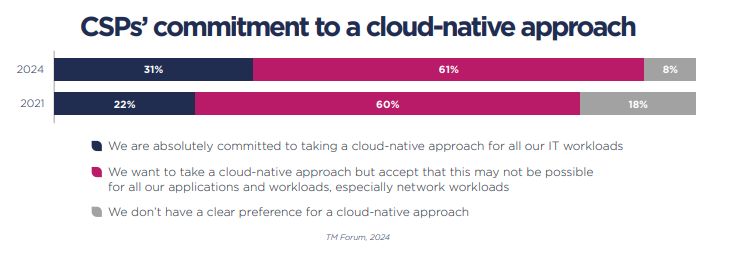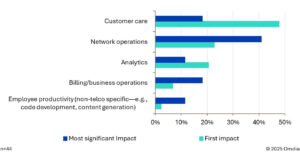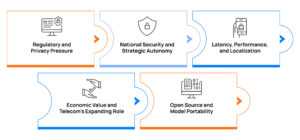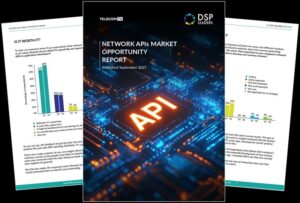Back in 2017, I started exploring what cloud-native could mean for telecom networks. At that time, Docker was gaining ground, Kubernetes was the new kid on the block, and “cloud-native” was more of a developer’s buzzword than a telco strategy. Fast forward a few years — with M&As reshaping the cloud ecosystem — Kubernetes has become the de facto orchestration layer from cloud to edge.
What drew me in was the promise of portability, decomposition of monoliths, and giving infra teams the power to move fast and innovate. When network workloads become software, ops teams gain the ability to automate, scale, observe, and now — with the rise of AI — even self-heal. It’s not just a tech shift, it’s a mindset shift. And for telcos, it’s the digital boost they’ve long needed.
But here’s the surprising bit — 8 years later, many telcos are still somewhere in the middle of their transformation.
According to TM Forum’s recent survey, only 31% of telcos are fully committed to cloud-native transformation, while 61% say they want to use cloud-native even if not every workload fits the model.
📊 Link to report
Meanwhile, Rakuten Mobile has already proven what’s possible — becoming the first to go all-in with a fully cloud-native mobile network. No legacy drag. Just software-defined everything.
A recent Fierce Network + Red Hat report unpacks this shift in detail — not just the tech, but the economics and strategy behind it.
Some powerful takeaways:
- Cloud-native enables Agentic AI — the kind that self-heals networks and recommends optimization paths.
- Up to 30–40% TCO savings, 40% Opex cuts, and 81% less downtime.
- Launch new services 29% faster.
- And yes, AI helps telcos accelerate the journey to cloud-native by guiding migration and optimizing infra.
One thing that stood out: success isn’t just about containers. It’s about ecosystems and standards. Projects like Sylva and Camara are making cloud-native telco infra interoperable and production-ready at scale.
Telcos can’t afford to treat cloud-native as an IT-only upgrade. It’s a strategic enabler for monetizing 5G, AI, and future services.
So here’s the question: Are we truly rethinking our infrastructure, or just wrapping old tech in new buzzwords?






Be First to Comment